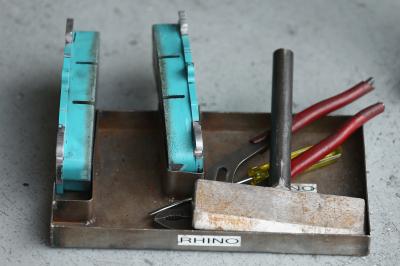
Bleeding your brakes has to be done when you have replaced the master cylinder, brake booster or any brake lines. You will also want to bleed the brakes if you have replaced very bare brake pads. The reason for bleeding the brake system is to rid the brake lines and brake system of any air and sediment in the brake lines. You want to bleed the system every two to three years as well. You can bleed the brakes with a partner and the process is simpler, or you can purchase a kit.
You will need a partner to help bleed the brakes. Have your partner assist you in bleeding the brakes by operating the brake pedal and the steering wheel as you work the valve underneath each wheel. Have your partner turn the steering wheel to the far right and hold it there as you loosen the valve above the caliper. This will involve a 7/16th wrench. Open the valve by turning it a full turn. Have your partner pump the brake pedal until fluid comes out of the valve. As soon as fluid comes out of the valve, tighten it with the wrench. Repeat this step on the remaining calipers to properly bleed the brakes.
Bleeding the brakes alone will require a bleeder kit. Ensure your brake fluid level is on the full mark in the master cylinder reservoir. You will want to remove all the wheels before you start. Attach the bleeder bag and attachment to the rear passenger side bleeder valve. Once the line is attached, you will open the bleeder valve and pump the brakes to fill the bag with brake fluid. Do not let the master cylinder run completely dry. Close the valve and detach the bag from the kit. Pour the brake fluid into the master cylinder, and repeat the process. Start the vehicle and pump the brake pedal till it feels stiff. The brake fluid will look like honey when it is clean and air-free. Ensure you repeat this process on the remaining three calipers.